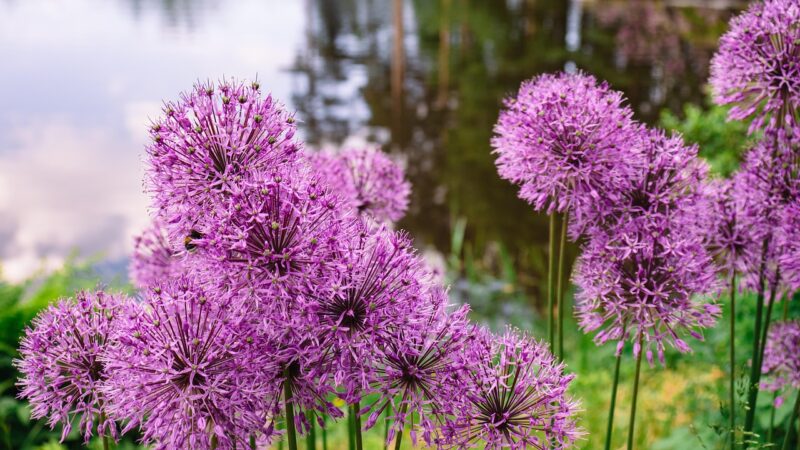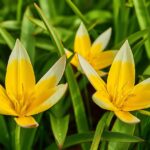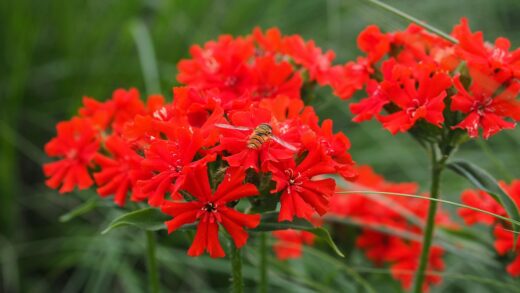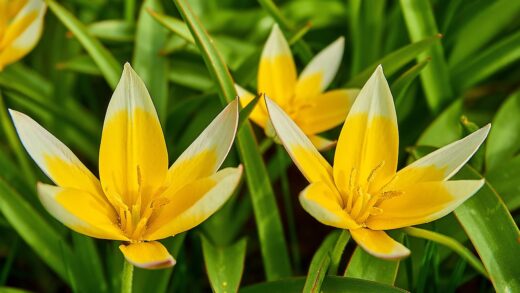Light requirements of Persian onion

The visual drama of Allium aflatunense—its tall, leafless stalk topped with a perfect sphere of purple—is a direct result of the energy it derives from sunlight. As with most flowering perennials, light is the fundamental driver of its growth, development, and overall performance. Meeting the light requirements of the Persian onion is not merely a suggestion for better blooms; it is a prerequisite for the plant’s long-term health and survival. Understanding how this plant utilizes sunlight and the consequences of placing it in a suboptimal location is essential for any gardener wishing to cultivate these magnificent architectural plants successfully. This article will illuminate the specific light needs of Allium aflatunense, guiding you to select the perfect spot to ensure a spectacular and reliable annual display.
The fundamental need for sunlight
Sunlight is the power source for virtually all plant life, and Allium aflatunense is no exception. Through the process of photosynthesis, the plant uses its broad, strap-like leaves to convert light energy into chemical energy in the form of sugars. This energy is the fuel for every aspect of the plant’s life, from the initial emergence of its leaves in the spring to the development of its towering flower stalk and vibrant bloom. After the flowering period, the leaves continue this vital work, creating surplus energy that is then transported down and stored in the bulb for the next season.
The entire annual cycle of the Persian onion is dependent on its ability to maximize photosynthesis during its relatively short spring growing season. The amount of energy it can produce and store during this window directly determines the quality of the following year’s display. A plant that receives abundant sunlight will be able to store a large amount of energy, resulting in a large, healthy bulb capable of producing a tall, strong stem and a magnificent, densely-packed flower head. This is why the post-flowering period, when the leaves are still green, is so critical to the plant’s long-term success.
The intensity and duration of sunlight are both important factors. Allium aflatunense has evolved in open, sunny environments and is adapted to high light levels. Its large leaves provide a significant surface area for capturing sunlight, allowing it to photosynthesize efficiently. The plant’s internal clock and growth processes are all regulated by the changing light patterns of the seasons, signaling when to emerge, when to flower, and when to begin transferring energy back to the bulb for dormancy.
Therefore, when choosing a planting location, you should think of it as choosing a power outlet for your plant. A site in full, direct sun provides a high-voltage connection, ensuring the plant has all the energy it needs to thrive. Any reduction in light levels is akin to providing a lower voltage, which will inevitably lead to a diminished performance. The health and vigor of your alliums are a direct reflection of the quality of the light they receive.
More articles on this topic
Ideal light exposure for optimal flowering
For Allium aflatunense to perform at its absolute best, it must be planted in a location that receives full sun. In horticultural terms, “full sun” is defined as a site that gets a minimum of six hours of direct, unobstructed sunlight per day. For these sun-loving perennials, more is often better, and a location that provides eight or more hours of sunlight is even more ideal, particularly in cooler, more northern climates. This generous exposure to sunlight is the single most important factor, alongside soil drainage, in achieving a stunning floral display.
The benefits of full sun exposure are numerous and readily apparent. Plants grown in full sun will have the strongest, thickest, and most upright stems, which is crucial for supporting the large, heavy flower heads that can be up to 10-12 centimeters in diameter. The coloration of the star-shaped florets will also be at its most intense and vibrant. Furthermore, a plant that is photosynthesizing at its maximum capacity will produce a larger, more robust bulb, which not only ensures a spectacular flower display the following year but also promotes the production of offset bulbs for future propagation.
The ideal location is one that is sunny throughout the spring, which is the plant’s active growing period. This could be in a dedicated perennial border, a mixed bed, or even a large container, as long as the site is not shaded by buildings, fences, or deciduous trees that leaf out early in the season. Consider the path of the sun across your garden throughout the day when selecting a spot. An open, south-facing location is often the perfect choice, as it will receive the longest duration of sunlight.
While these plants are sun-worshippers, in extremely hot and arid climates (such as the upper end of their hardiness range, like zone 8), a location that provides some light shade during the hottest part of the afternoon can be beneficial. This can help to prevent the foliage from scorching and reduce water stress on the plant. However, for the vast majority of climates, the rule is simple: the more sun you can provide, the happier and more impressive your Allium aflatunense will be.
More articles on this topic
Consequences of inadequate light
Placing Allium aflatunense in a location that does not receive enough direct sunlight will lead to a range of predictable and disappointing outcomes. The most immediate and noticeable effect will be on the plant’s stature. In a desperate attempt to reach for more light, a process known as etiolation, the plant will produce stems that are weaker, thinner, and leggier than those grown in full sun. These elongated stems will be far less capable of supporting the weight of the flower heads, often causing them to flop over, bend, or even break, especially during periods of wind or rain.
Flowering performance will also be severely compromised in shady conditions. A plant that is starved of light cannot produce enough energy to support a large, vibrant bloom. The flower heads are likely to be significantly smaller, with fewer individual florets, and the color will appear washed-out and less intense. In very shady locations, the plant may not gather enough energy to flower at all, producing only a small clump of leaves before withering away. This lack of flowering is a clear sign that the plant is struggling to survive and is unable to invest resources in reproduction.
The long-term health and perennial nature of the bulb are also at risk in low-light conditions. Because the plant cannot photosynthesize effectively, it will be unable to replenish the energy reserves in the bulb after flowering. Each year, the bulb will become progressively smaller and weaker, leading to a steady decline in the plant’s overall vigor. Eventually, the bulb may become so depleted that it fails to emerge at all, effectively dying out. This is why alliums that initially perform well but decline over subsequent years are often found to be in locations that have become shadier over time, perhaps due to the growth of nearby trees or shrubs.
In summary, while Allium aflatunense may technically survive for a time in partial shade, it will not thrive. The architectural beauty and dramatic impact of this plant are entirely dependent on it receiving the abundant sunlight it craves. Providing anything less is a recipe for weak stems, poor flowering, and the eventual decline of the plant. To enjoy this allium in all its glory, prioritizing a full-sun location is non-negotiable.



















